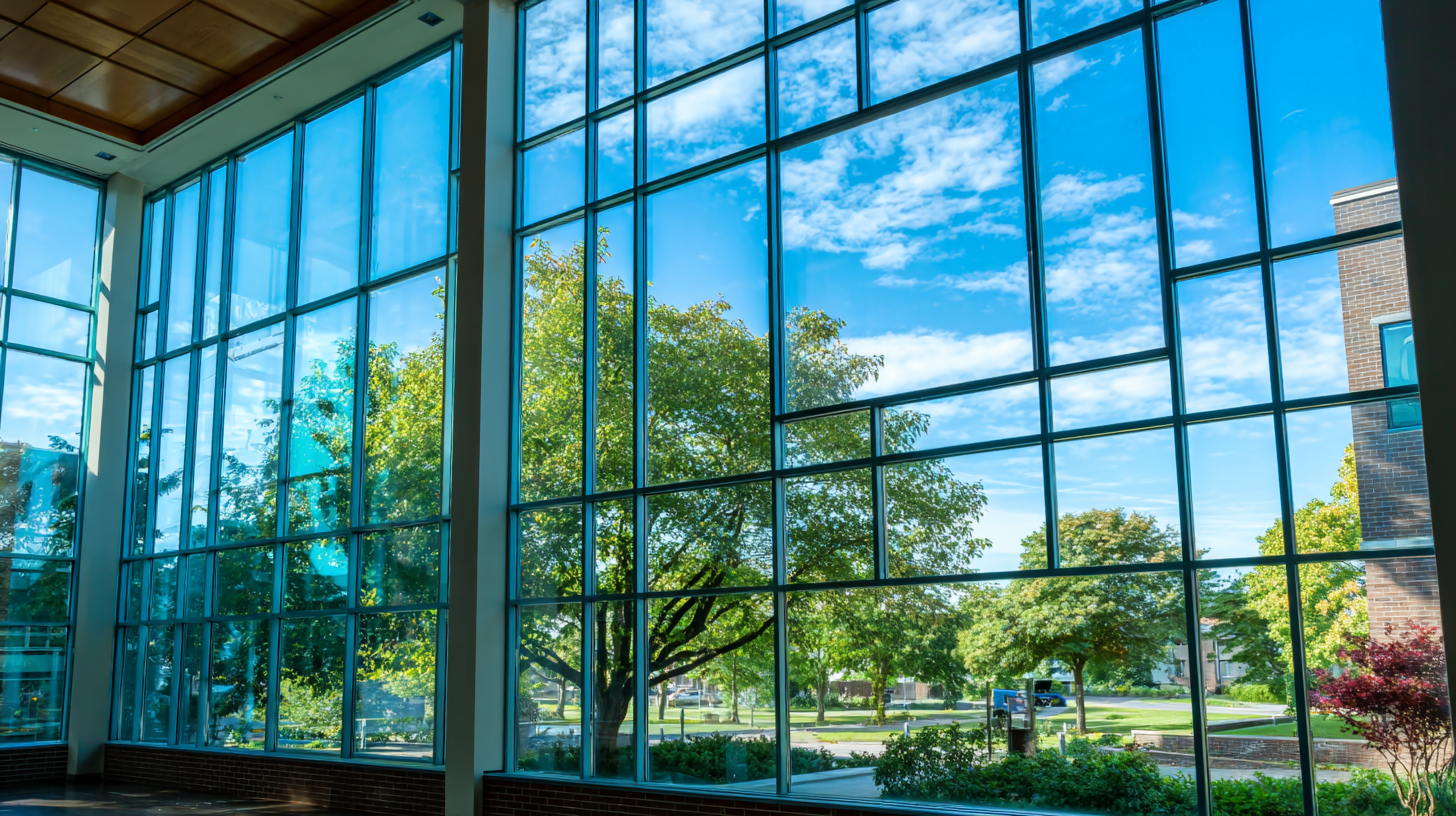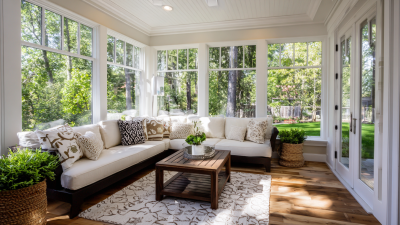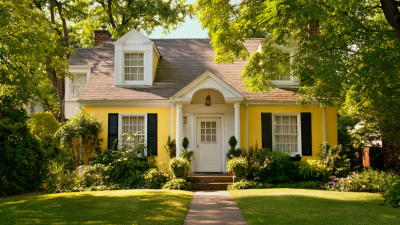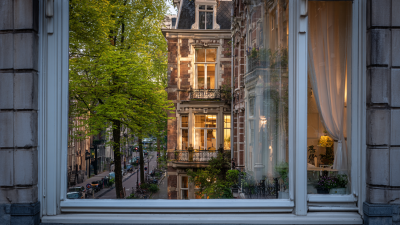In recent years, the focus on sustainability and energy efficiency has reached new heights, particularly in the construction and renovation sectors. One of the most impactful areas is the utilization of energy-efficient glass windows, which have been shown to significantly reduce energy consumption in residential and commercial buildings. According to a report by the U.S. Department of Energy, up to 30% of a building's heating energy can be lost through inefficient windows, making the choice of glass windows a critical factor for property owners.

Implementing advanced glazing technologies, such as low-emissivity (Low-E) coatings and gas-filled spaces, can lead to energy savings of 7-15% and decrease annual energy costs by as much as $500 for the average household. As we explore the myriad benefits of energy-efficient glass windows, it becomes clear that they are not only a key component in enhancing building performance but also a vital investment in sustainability and long-term financial savings.
Energy-efficient glass windows are a game changer in sustainable architecture, integrating advanced technologies designed to minimize energy consumption while enhancing comfort. These windows typically feature multi-layer glazing and specialized coatings that reflect heat in summer and retain warmth in winter. According to the U.S. Department of Energy, homes equipped with energy-efficient windows can save between $126 and $465 annually on energy bills, depending on local climate and energy costs. Technologies such as Low-E (low emissivity) coatings significantly enhance performance by reducing UV rays, which can also protect interior furnishings from fading.
**Tips for Choosing Energy-Efficient Glass Windows:**
1. Look for windows with the ENERGY STAR label, ensuring they meet strict energy efficiency guidelines.
2. Consider double or triple glazing for optimal insulation, especially in regions with extreme temperatures.
3. Select frames made from materials like vinyl or fiberglass, as they offer better thermal performance than traditional wood or aluminum frames.
In addition to cutting down energy costs, energy-efficient windows also contribute to environmental sustainability by reducing a home's carbon footprint. By opting for these windows, homeowners not only invest in their property's value but also support a greener future.
 Energy-efficient glass windows represent a significant advancement in both savings and sustainability for homeowners. According to a 2021 report from the Department of Energy, replacing traditional windows with energy-efficient alternatives can reduce energy costs by up to 30%. This is particularly beneficial during extreme weather conditions, as efficient glazing helps maintain indoor temperatures, reducing the reliance on heating and cooling systems. Notably, while heat pumps are often highlighted for their heating capabilities, they also excel in cooling, making them an excellent complement to energy-efficient windows in managing utility bills.
Energy-efficient glass windows represent a significant advancement in both savings and sustainability for homeowners. According to a 2021 report from the Department of Energy, replacing traditional windows with energy-efficient alternatives can reduce energy costs by up to 30%. This is particularly beneficial during extreme weather conditions, as efficient glazing helps maintain indoor temperatures, reducing the reliance on heating and cooling systems. Notably, while heat pumps are often highlighted for their heating capabilities, they also excel in cooling, making them an excellent complement to energy-efficient windows in managing utility bills.
In addition to direct cost savings, homeowners are encouraged to take advantage of available tax credits for energy efficiency upgrades before they expire in 2025. The Inflation Reduction Act has expanded these tax incentives for various home energy projects, providing a unique opportunity to offset installation costs. The potential financial benefits are clear: a recent study indicated that investments in energy-efficient technologies, including upgraded windows, can yield returns of over 30% annually. Many homeowners might not realize that such improvements not only enhance comfort but also contribute to long-term sustainability goals by reducing overall energy consumption and greenhouse gas emissions.
Energy-efficient glass windows play a crucial role in promoting sustainability and minimizing environmental impact. By significantly reducing energy consumption in buildings, these windows help lower greenhouse gas emissions associated with heating and cooling. Their advanced insulation properties prevent heat loss in the winter and keep interiors cool during the summer, leading to a reduced reliance on fossil fuel-based energy sources. This shift not only contributes to lower utility bills for homeowners but also supports the global effort to combat climate change by decreasing overall energy demands.
Moreover, the production and installation of energy-efficient windows can lead to reduced resource waste. These windows are often designed with recyclable materials, which means when they reach the end of their life cycle, they can be processed and repurposed rather than ending up in landfills. This sustainable approach aligns with a circular economy, where the emphasis is placed on reusing materials and minimizing environmental footprints. By choosing energy-efficient glass windows, consumers make an impactful decision that supports both their financial savings and the health of our planet.
When considering the installation of energy-efficient glass windows, it is essential to adhere to best practices that maximize their efficiency. Technical reports indicate that proper installation can boost energy savings by up to 30%. Lab managers, for example, can apply similar strategies used in the installation of cooling fume hoods and biological safety cabinets, ensuring that air leakage is minimized and seal integrity is prioritized. Selecting the right frame materials and ensuring accurate fitting are also pivotal to enhance overall performance and energy conservation.

Furthermore, understanding local climate conditions plays a critical role in the selection and installation process. According to a 2023 industry report, regions with higher sun exposure benefit significantly from low-emissivity glass, which can reflect heat during summers while retaining warmth in winters. By assessing external influences and potential energy flows, installers can tailor window features such as double glazing or insulated frames to maximize thermal performance, thereby boosting sustainability efforts in any residential or commercial building project.
Investing in energy-efficient glass windows can significantly enhance property value, making homes more attractive to potential buyers. According to a study by the Efficient Windows Collaborative, homes equipped with energy-efficient windows can see a property value increase of up to 10%. This enhancement is not only due to the aesthetic benefits of modern window designs but also the long-term savings on energy costs, which are increasingly appealing to environmentally conscious buyers.
Moreover, energy-efficient windows contribute to overall energy performance ratings, which are becoming more important in real estate transactions. A report from the Department of Energy indicates that homeowners can save an average of $465 annually on energy bills by replacing single-pane windows with high-performance models. This financial benefit is paired with increased comfort levels in the home, as energy-efficient windows help maintain consistent indoor temperatures, thus creating a more inviting living space. With sustainability becoming a central theme in home purchasing decisions, owners who invest in such improvements are likely to find their properties in higher demand, ultimately reflecting in a greater market value.
| Property Type | Initial Cost ($) | Energy Savings Yearly ($) | Increase in Property Value (%) | Payback Period (Years) |
|---|---|---|---|---|
| Single-Family Home | 10,000 | 1,200 | 15 | 8.3 |
| Multi-Family Residential | 25,000 | 3,000 | 12 | 8.3 |
| Commercial Building | 50,000 | 6,000 | 18 | 8.3 |
| Retail Space | 30,000 | 4,000 | 16 | 7.5 |





